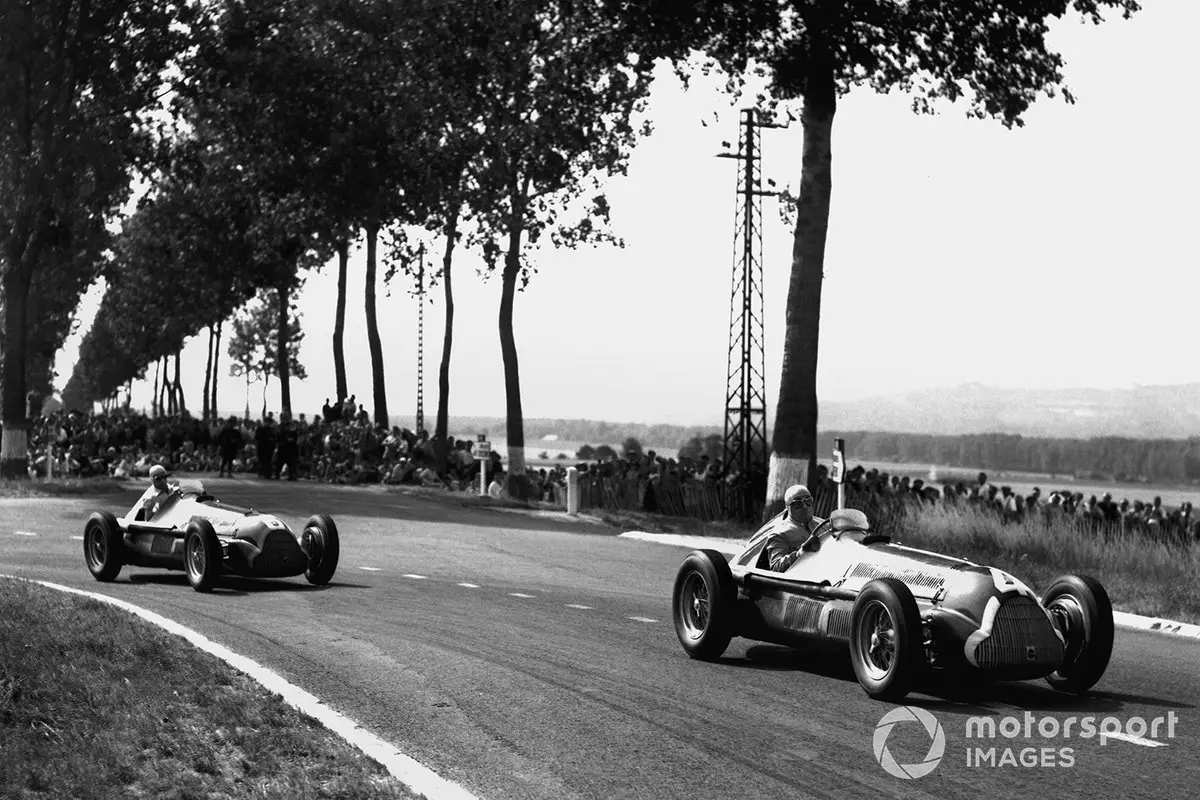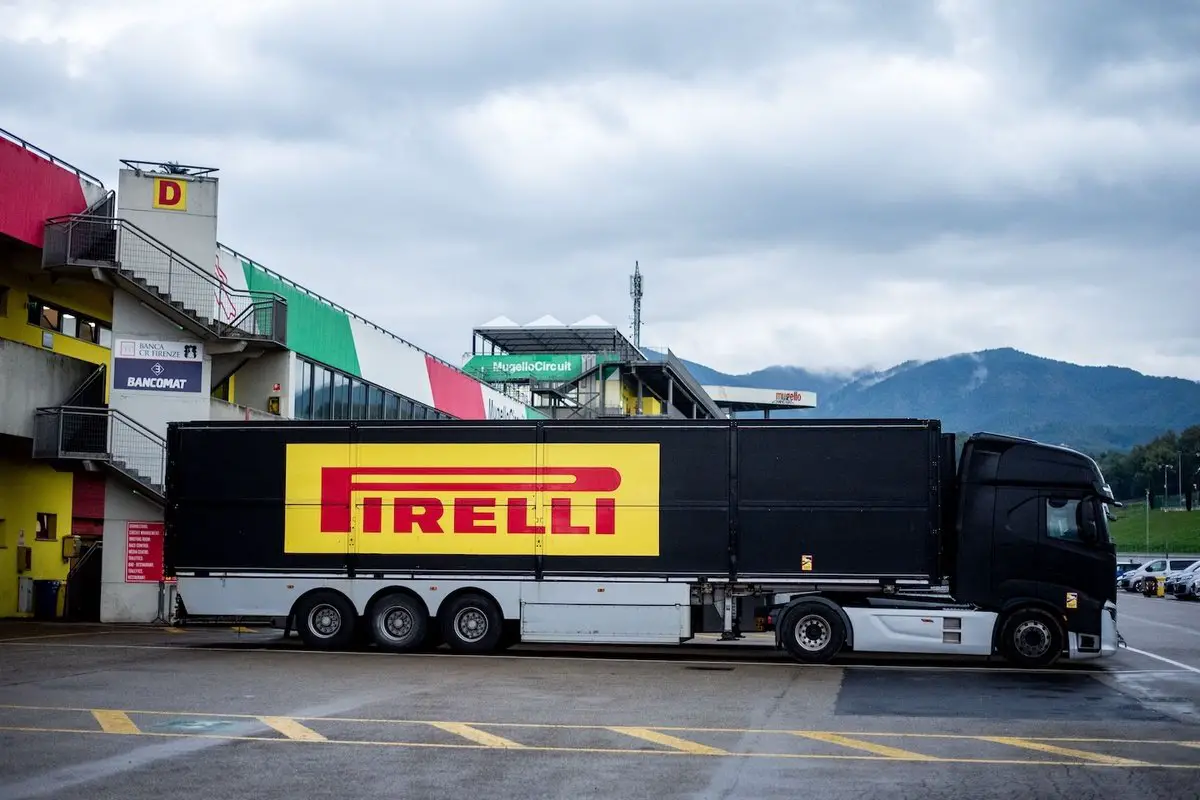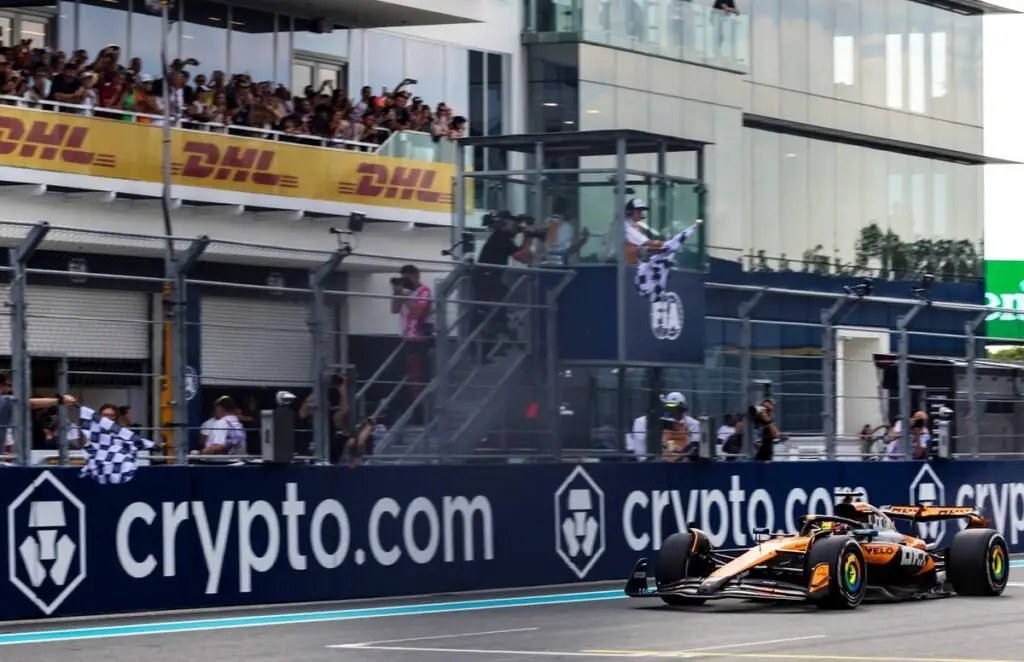The Evolution of Formula 1: A Look Back at McLaren’s MCL39 and Alfa Romeo’s 158
Imagine the scene: Juan Manuel Fangio and Giuseppe Farina, two legendary figures in Formula 1 history, engaged in a lively debate over social media trends or sharing anecdotes about their racing days. This might seem out of place considering the technological advancements that have transformed the sport since its inception. Yet, it’s a fascinating comparison to make between our current class of the field – McLaren‘s MCL39 – and Alfa Romeo’s 158, the car that dominated Formula 1’s inaugural season in 1950. Let’s delve into this intriguing contrast, exploring whether modern technology outshines the past or if nostalgia has its merits.
Dimensions and Weight
The Alfa Romeo 158, also known as the ‘Alfetta,’ was a compact car for its time, designed in 1938. Despite being a voiturette initially, it complied with the original Formula 1 (initially Formula A) regulations. Although it was longer than some cars on the grid in 1950, like the Maserati 4CLT and Ferrari 125, it was far smaller than most F1 cars of the 1960s. As cars got smaller and lighter over time, the 158’s size began to increase, much like how smartphones started becoming larger after the introduction of pocket-sized tablets. The weight of the 158 varied between 600kg-700kg, which was relatively heavy for its time but comparable to today’s cars considering the safety systems, tyres, and power unit parts on board.
Today’s Formula 1 cars are significantly larger than their 1950 counterparts due to the positioning of hybrid systems and underbody aerodynamics. The MCL39 is typical of today’s era of cars, where the need for longer dimensions necessitated by these factors makes them appear enormous compared to cars from 15-20 years ago; today’s machines look huge in comparison. The 2017 aero regulations brought back a maximum width of 2000mm after almost two decades of running to a ‘narrow’ 1800mm, and the 2022-spec rules retained this form factor.
Chassis and Suspension
In the early days of Formula 1, cars were built onto frames, with bodywork panels affixed to it. The 158 was developed long before common convention decreed that the engine block should become a stressed member, meaning that this was simply bolted into the existing framework. The trailing-arm suspension at the front was underpinned by a transverse leaf spring linking both wheel hubs, while the 158 used a swing axle at the rear to ensure both rear wheels operated independently under bump and rebound conditions.
Suspension layouts in modern Formula 1 have two functions: they must fulfill a given role set out by vehicle dynamics engineers, and contribute aerodynamically. In recent years, teams have experimented with pushrod and pullrod inclinations at the front and rear; McLaren took a front-mounted pullrod layout and a rear-mounted pushrod when the current regulations were introduced in 2022, and has also addressed the positioning of its suspension wishbone legs in order to restrict chassis movement to ensure a stable aero platform.

Powertrain, Drivetrain, and Fuel Economy
The internal combustion engine hasn’t changed significantly in its overall form, but the details and ancillary components are very different. Alfa Romeo’s inline-eight made use of a supercharger; the original 1938 car produced around 190bhp, but this was upped to around 350bhp by 1950. Today’s engines are 1.6-litre V6s with turbochargers, and the addition of the MGU-H for recovery and MGU-K for recovery and drive brings the ultimate power figure up to around 1000bhp.
The fuel tank was kept in the tail of the car, and although its high fuel consumption was not much of an issue in 1950 given the speed of the 158 versus the other cars, it cost victory in 1951’s British GP as both Fangio and Farina had to stop twice for fuel, versus Ferrari‘s one-stop for winner Jose Froilan Gonzalez. Today’s engines boast efficiency figures of over 50%, thanks to both hybridization and advances in ignition, timing, and precision.

Brakes, Tyres, and More
The stopping power of a modern-day Formula 1 car is incredible, as drivers can stamp on the brakes 100 meters before a slow-speed corner at well over 200mph, and ensure an 800kg monster can make it through at the right speed. The MCL39’s braking system has six-piston calipers to handle the size of the brake pads – carbon discs and pads have been in use in Formula 1 for multiple years, thanks to their superior strength and performance over steel.
There is a common thread here: both cars use Pirelli tyres. However, there’s very little similarity between the tyres themselves other than the brand name and the form factor of a black, rubbery circle. In the 1950s, tyres were incredibly narrow with a distinct tread pattern – and, when you look at them face on, generally used positive camber; this was to reduce rolling resistance on the straights by reducing the tyre contact patch. As tyre manufacturers started to experiment with radial-ply tyre constructions over the then-common cross-ply structure, the tyres themselves could take more load; in 1971, the first slick tyre was produced by Firestone for the Spanish Grand Prix.
Twenty-seven years later, treaded tyres were reintroduced as a measure to slow cars down; grooved dry tyres lasted until the end of 2008, before slicks were reintroduced. Today’s tyres are produced solely by Pirelli, which has six dry compounds and two wet-weather constructions.
Drivers
Drivers in the early days of Formula 1 were built very differently compared to today. Rather than having to conform to today’s standard of a lean, athletic figure to trade off strength and weight, racers were far burlier figures. Age did not weary them either; Farina was almost 44 when he won the inaugural Formula 1 world championship for drivers, Fangio was 40 when he took his first F1 title in 1951 (and 46 when he won his last), and Fagioli was 52 when he raced in 1950 (and 53 when he shared the winning Alfa with Fangio in the 1951’s French Grand Prix).
In more modern times, it was usually common for F1 drivers to debut in their early-to-mid 20s before Max Verstappen’s appearance in F1 at the age of 17 rather changed the perception. F1 accordingly created a minimum age limit of 18 to give drivers more time in the junior categories. Norris was 19 when he made his F1 grand prix debut at the 2019 Australian GP, while Piastri was 21 when McLaren signed him for 2023. Drivers tended to span disciplines or championships during this era, straying beyond grand prix racing to drive in sportscars races. In that context, Norris’s experience in endurance racing after participating in the 2018 Daytona 24 Hours could be viewed as something of a throwback – although this came before his F1 career. Aside from exceptions such as Fernando Alonso, most drivers today are single-discipline racers, understandably so given the size of the modern calendar.







